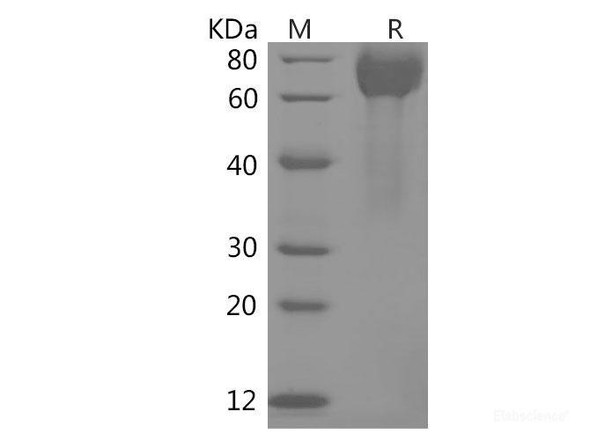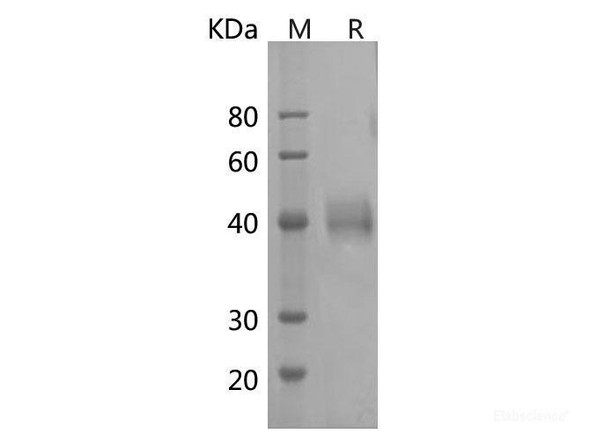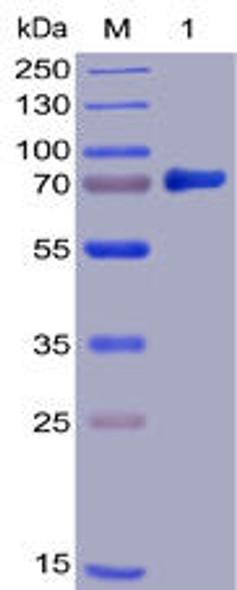Description
| Product Name: | Human B7-H6 Recombinant Protein (His Tag) (Active) |
| Product Code: | RPES6166 |
| Size: | 50µg |
| Species: | Human |
| Expression Host: | HEK293 Cells |
| Synonyms: | B7-H6, B7H6, DKFZp686O24166 |
| Mol Mass: | 28.1 kDa |
| Tag: | C-His |
| Purity: | > 95 % as determined by reducing SDS-PAGE. |
| Endotoxin Level: | < 1.0 EU per μg of the protein as determined by the LAL method. |
| Bio Activity: | Immobilized human B7-H6 -His at 10μg/mL (100μL/well) can bind human NCR3-Fch, the EC50 of human NCR3-Fch is 6-200ng/mL. |
| Sequence: | Met 1-Ser262 |
| Accession: | NP_001189368.1 |
| Storage: | Generally, lyophilized proteins are stable for up to 12 months when stored at -20 to -80°C. Reconstituted protein solution can be stored at 4-8°C for 2-7 days. Aliquots of reconstituted samples are stable at < -20°C for 3 months. |
| Shipping: | This product is provided as lyophilized powder which is shipped with ice packs. |
| Formulation: | Lyophilized from sterile PBS, pH 7.4 Normally 5 % - 8 % trehalose, mannitol and 0.01% Tween80 are added as protectants before lyophilization. Please refer to the specific buffer information in the printed manual. |
| Reconstitution: | Please refer to the printed manual for detailed information. |
| Background: | Natural cytotoxicity triggering receptor 3 ligand 1(B7-H6) is a glycosylated member of the B7 family of immune costimulatory proteins. Mature human B7-H6 consists of a 238 amino acid (aa) extracellular domain (ECD) that contains one Ig-like V domain and one Ig-like C1 domain, a 21 aa transmembrane segment, and a 171 aa cytoplasmic domain that contains one ITIM, one SH2, and one SH3 motif. Both of the Ig-like domains carry N-linked glycosylation. The Ig-like V domain mediates 1:1 stoichiometric binding of B7-H6 to NKp30 expressed on NK cells. It does not show binding to NKp44, NKp46, or NKG2D. Ligation of NKp30 by B7-H6 induces NK cell activation and target cell cytolysis. B7-H6 is expressed on a wide range of hematopoietic, carcinoma, and melanoma tumor cells, which is consistent with the detection of NKp30 binding sites on many tumors. |






